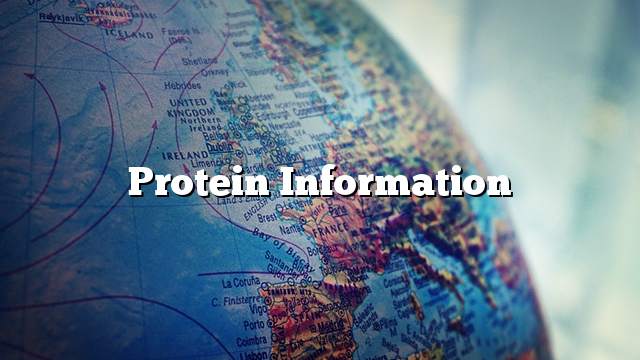Protein
Is an organic compound that is different from carbohydrates and fats by containing the nitrogen element. Its basic structure is amino acid, that is, the protein consists of a series of amino acids that bind to each other with peptide bonds.
The discovery of the protein world Joe Jacob Perzellius in 1838, and this discovery has revolutionized the sciences of life and medicine at the time, was discovered to answer many of the questions about the causes of many common diseases, which result from a defect in the composition of the plasma membrane, which consists of protein and Sulfates.
The presence of protein in the human body
There is a protein in each cell of living organisms, which explains why the Greeks called him protas, which means the basis. Protein is the basis of life from the point of view of the Greeks, which science has proved to be true. In humans, the muscles consist of both voluntary types (leg muscles) and involuntary Such as the heart) of the protein, and the receptors are composed of cells as well as enzymes, and even that the protein enters the structure of the genetic material as well.
Sources of protein
Of protein fermentation include:
Animal Resources
Animal sources contain all types of essential proteins, unlike plant sources. One plant does not contain all the essential proteins, so it is necessary to collect more than one type of legumes, for example, to obtain a complete protein dish.
- Meat: 100 grams of red meat contains about 22.3 grams of protein, which is high compared to other nutrients and has a good biological value (80BV maximum).
- Eggs: The medium-sized boiled egg contains about 12.1 grams of high-quality protein (biological value equal to 100BV). Amino acids are found in it to facilitate digestion.
- Milk: 100 grams of milk contains 3.2 grams of fast-absorption protein (whey) and slow-absorption protein (casein), which makes it a homogeneous mixture of biological value (91BV).
- Note: It should be noted that the child in the stage of growth can suffer from the intolerance of lactose, not benefit from milk and the protein contained in the inability of the intestines to absorb it.
- Fish and seafood: one of the best sources of protein, and recommended to contain the oil on omega3, and contain a little fat and cholesterol and rich protein good value (70BV).
- Chicken: It contains 22.8 grams of protein, and is recommended to eat chicken breasts instead of other parts because of low fat, and the nutritional value of chicken protein to (79BV).
Plant sources
- Soybeans: Soy people rely on soy milk as an alternative source of animal milk. Soya has a very good nutritional value (74BV) and many products are made from it such as cheese to provide vegetarians and people who do not like the protein-rich animal derivatives the body needs to function natural.
- Legumes: Contains fiber as well as protein, which helps in digestion and gives a sense of satiety for a longer period, and recommends mixing more than one type of legumes together to get all the proteins needed by the body.
Benefits of protein for the human body
- Helps in the growth of muscles and tissues, and here is the importance of providing children in pre-puberty, because the lack of protein increases the risk of occurrence of dwarfism in children, and the growth of their organs properly.
- Helps the cells of the body to regenerate.
- Regulates pH. (Here, it should be noted that increased protein consumption causes an increase in pH because digestion of protein results in the H + proton, which in turn raises the acidity of the stomach and therefore warns against eating high-protein foods.
- Maintains the muscle mass.
- Contributes to the regulation of metabolism.
- Provide the body with energy when it stores the body’s carbohydrate (for example, in the stages of hunger for a week or more).
- Enter into the formation of enzymes and hormones and regulate chemical reactions.
- Enter into the formation of antibody antibodies.
- It enters into the formation of hair and nails (so we find people who suffer from famine with pale hair and fragile nails).
- Regulate the distribution of fluids in the body.
